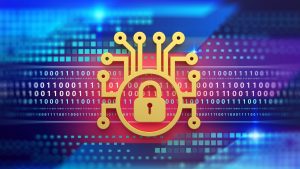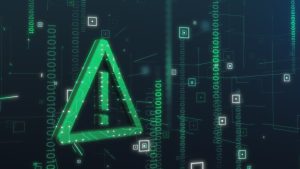
October is International Cybersecurity Awareness Month, which aims to inform the public about the importance of cybersecurity. With technology being omnipresent in society, it’s vital to inform both businesses and their constituents about cybersecurity issues and simple ways to protect data, assets and online reputations.
Who Are the Main Players?

According to IBM’s Cost of a Data Breach Report 2023, only one-third of data breaches were detected by security teams of the companies surveyed. This result demonstrates a major gap in companies’ ability to detect this type of incident and respond appropriately. Cybersecurity is an issue that goes beyond IT departments.
Today, the main threats to cybersecurity include the following:
Nation-State Actors
These are among the most organized and powerful groups, making them undoubtedly the most dangerous. These groups invest heavily in the development of cyber capabilities, both offensive and defensive, to gain geopolitical advantage. Activities from these groups strongly influence cybersecurity trends. Offensively, state actors design platforms and tools that they exploit as they see fit. To defend against attacks from these groups, government agencies are tightening regulations on corporate cybersecurity.
Cybercriminals
Cybercriminals belonging to these groups are generally attracted by the lure of profit. Some may be highly organized and receive state support to further their cause. Groups that are less organized can still be very dangerous.
Individual Hackers
These cybercriminals act alone or in small groups. They may be motivated by curiosity, money, or notoriety. As the technologies involved are increasingly accessible through on-demand hacking platforms, even hackers with little experience can carry out major attacks.
What Are the Main Threats to Cybersecurity?

Cyber Espionage
This term refers to unauthorized access to computer systems and networks for the purpose of collecting confidential data. Potential damage could include damage to corporate reputations, national security, and loss of competitive advantage. Cyber espionage can take several forms:
- Business email compromise: Pretending to be a trusted person or entity to obtain confidential information.
- Credential stuffing: Stealing usernames and passwords from a specific website or service to gain access to other accounts.
- Insider threat: Arises when ill-intentioned users take advantage of their access to a company’s systems and data to commit illicit acts.
- Supply chain attack: Breaking into company systems via those of its suppliers.
Cyber Sabotage
This type of attack aims to disrupt an organization’s digital infrastructure to compromise its integrity, confidentiality, or reputation. Acts of cyber sabotage include the following:
- Ransomware (extortion software): Encryption or modification of critical data to extort a ransom from targeted victims.
- Denial of service (DoS): Disrupts the availability of online services or websites by overwhelming servers with traffic, making them inaccessible to legitimate users.
- Process sabotage: Focuses on data-dependent processes essential to smooth operations. By modifying or deleting critical data, attacks render operational protocols ineffective.
Cyber Fraud
This type of cyberattack brings together several illicit activities. Cyber fraud aims to obtain money or steal data by exploiting corporate vulnerabilities through email and/or psychological hacking, which occurs when human psychology is being exploited to manipulate victims. Here are three common examples of cyber fraud:
- Credential exposure: This is committed through phishing emails, calls, or text messages. Impostors usually pretend to have an urgent account verification or refund process.
- Account takeover: Occurs when a malicious actor takes over a legitimate account (banking, messaging, social media, etc.) without the owner’s permission.
- Payment fraud: Aims to trigger an unauthorized financial transaction. The malicious actor pretends to be a trusted person, usually asking an accounts payable manager to change banking information to receive a payment.
Misinformation
This involves disseminating false or misleading information to deceive, manipulate or confuse. It is a powerful tool for influencing public opinion and creating unrest. Disinformation has two main aims:
- Brand abuse: Misinformation can be used to tarnish the reputation of a brand or company.
- Election fraud: Misinformation can also be used to weaken the democratic process. The dissemination of false information and doctored documents can be used to mislead voters, harm candidates, or manipulate the outcome of elections.
Best Business Practices in Cybersecurity

Raising awareness of cybersecurity risks and adopting best practices are the first line of defense against cybersecurity threats. Here are a few recommended by BDO Canada:
- Limit your exposure to risk by using accessible data to quickly detect threats. For example, you can monitor illicit online marketplaces and forums where cybercriminals often exchange stolen data.
- Always keep an eye on your digital infrastructure to spot suspicious network behavior. This will help you prevent unauthorized access.
- Find out about privacy and security laws and regulations, so you can adapt your systems for compliance.
- Evaluate and revise your protocols in the event of a cyberattack. Your company should be able to continue activities and operations following a cyberattack.
- Help your directors and investors make informed decisions by integrating cybersecurity risk management into your overall strategy.
Available Resources

Managing cybersecurity risk can be complex, which is why TECHNOCompétences provides resources to help companies navigate these murky waters. These resources include training courses, guides and tools. To find out more, click here. You’ll also find additional information about cybersecurity.
Conclusion
Cybersecurity is not just a concern for IT departments; it involves multiple stakeholders and a comprehensive risk management strategy. Indeed, the effort and budget invested in cybersecurity are essential to maintaining customer confidence, regulatory compliance, and operational resilience.
Sources
BDO Canada
